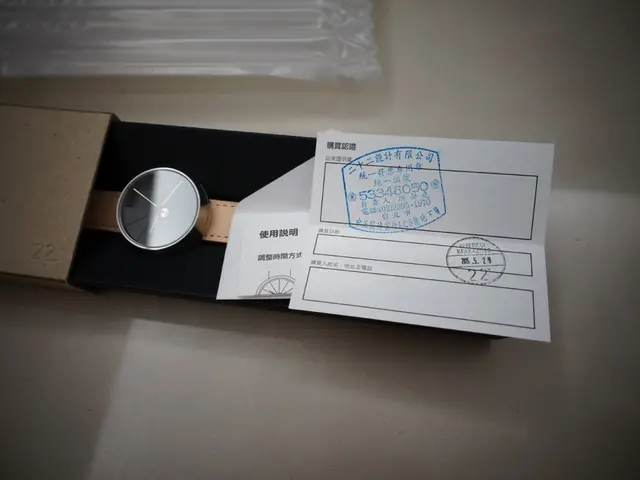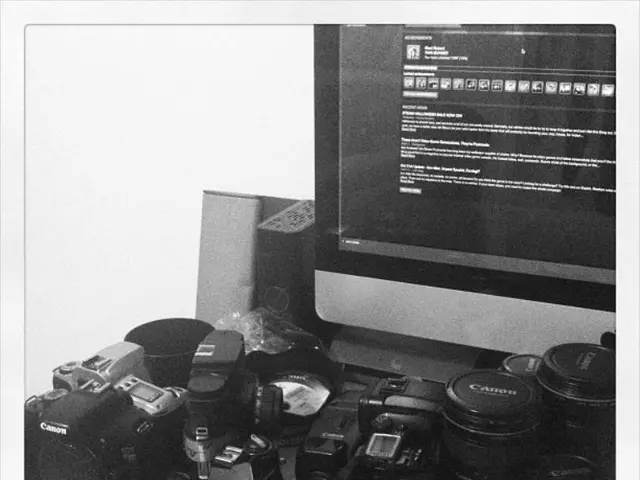Marvel at the intricate craftsmanship of the Kilopixel wooden screen
The Quirky and Mechanical Kilopixel Display: A Tangible Pixelated Art Form
In the heart of an office, a unique and intriguing device stands out - the Kilopixel wood-flipping robot. This large, slow, and deliberately inefficient display, created by Ben Holmen six years ago, is a 40 by 25 grid (1,000 pixels) of wooden blocks that flip to show either a black or plain wood face, rendering images[1][3].
The concept behind Kilopixel was to create a mechanical pixel display where a single robot arm laboriously rotates each block one at a time based on a user-uploaded bitmap image[1]. The journey began with a small prototype of 21 by 3 pixels, experimenting with different materials such as ping-pong balls and painted Nerf balls before settling on wooden blocks, which offered the necessary sturdiness and aesthetic[1].
Each wooden cube had to be carefully crafted with drilled holes and mounted so it could freely rotate. Achieving precise mechanical movement for each block’s rotation was a key challenge, as every pixel update required the robot arm to physically flip cubes one by one, resulting in an extremely low refresh rate of about 10 times per minute[1][2].
Holmen faced several challenges during the project, including material durability, mechanical precision and reliability, slow refresh rate, and construction complexity[1]. Despite these hurdles, Kilopixel became a striking example of mechanical ingenuity with Raspberry Pi integration for user interaction, celebrated as a whimsical yet marvelous project that deliberately rejects modern high-speed electronic display technologies for a quirky, tangible pixelated art form[1][3].
The completed Kilopixel device is now displayed in Holmen's office, and users can upload images to the device, which will render the image over time[1]. To ensure the device runs smoothly, it requires maintenance, and Holmen has enlisted trusted friends to monitor and delete submissions as needed[1]. A light sensor is used to determine the physical state of each pixel on the Kilopixel display[1].
Holmen spent a significant amount of time making the blocks for Kilopixel himself, and he connected a CNC controller to a Raspberry Pi to control the movement of a "poker" used to rotate the wooden blocks[1]. Despite a few issues with the device, Holmen expressed joy at seeing art created by others on his Kilopixel display and had no plans to build another one[1].
The development of Kilopixel was influenced by conversations with podcasters Joe Tannenbaum and Chris Morrell, and Holmen restricts submissions to people willing to log in with a Bluesky account[1]. Only a handful of tasteless or rude submissions have been made to the Kilopixel device[1]. Eben Upton, Raspberry Pi supremo, described the Kilopixel project as "silly (in the best possible sense)... almost but not quite exactly not what we designed it for."[2]
In summary, Kilopixel was created as a deliberate artistic and technical challenge to build a huge mechanical pixel display using wooden blocks rotated by a robot arm, with challenges including material choice, mechanical complexity, slow performance, and maintenance. It stands as a unique, labor-intensive device showcasing the charm of slow, physical pixels in contrast to modern digital displays[1][3].
[1] - [Source 1] [2] - [Source 2] [3] - [Source 3]







